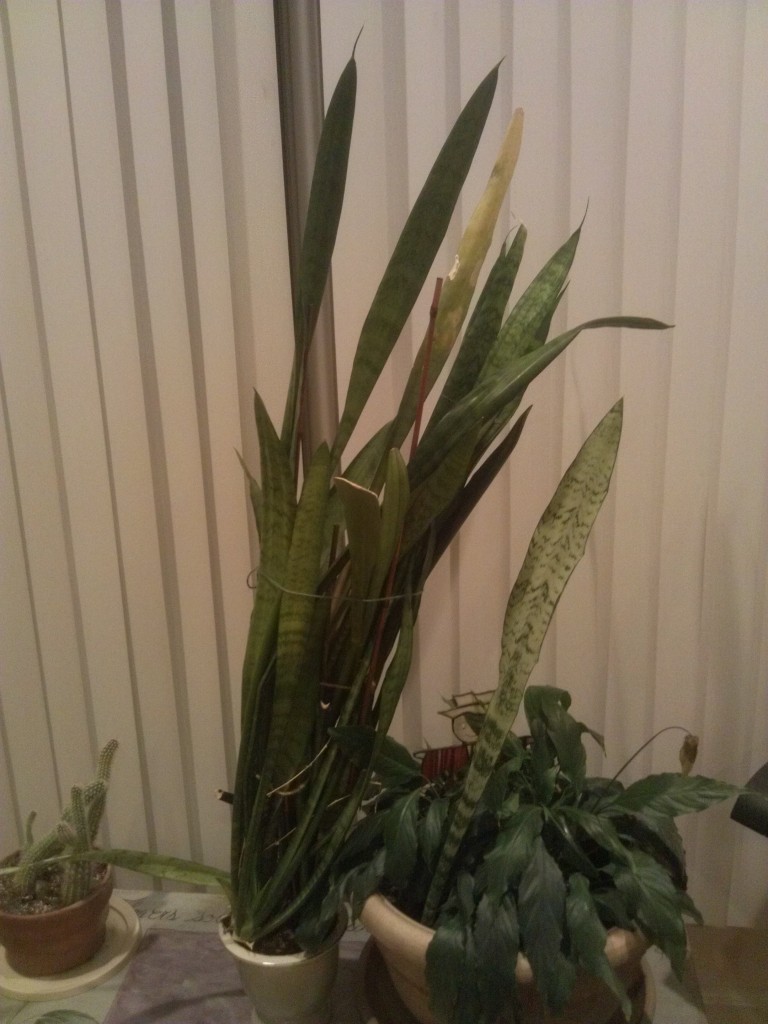Recently I’ve had three people ask me about caring for their Sansevieria. I took that as a sign that there may be a few more people wondering about the same thing.
Sansevieria, commonly known as mother-in-law’s tongue or snake plant, are probably the most common plant found in people’s homes. I suspect the reason for this is because they survive long after other plants have died from neglect. Therein lies the secrete to keeping a Sansevieria: benign neglect.
Most plants die fairly quickly if neglected. Not so with Sansevieria. Whenever I see a snake plant that has problems, most of the time it’s because its owner watered it too much. During this time of the year watering about once every three weeks is plenty. Water a little more frequently if the plant is in a bright window or greenhouse, a little less if it is in a darker area of the house.
Although they can survive under almost any kind of lighting conditions, full morning sun will help your plant thrive rather than just survive . Continuous bright but not direct light is just as good. I kept one in a bright foyer area for years and it was quite happy there. If your plant’s leaves are flopping over, it may be a sign of too little light.
Sansevieria grow under a wide temperature range too. So if you are competing with your most energy efficient neighbors to use the least amount of energy during the winter, don’t worry about hurting your Sansevieria by turning down the thermostat too much, it will do fine in cool, but not cold, conditions. From my own experience I would caution you not to leave your plant in a drafty place when the temperature might go below 40°F for any length of time — low temperatures will cause chilling injury.
Because Sansevieria are grown for their foliage and rarely flower, some people think they are dull and boring. If you are in this group, think about this: NASA scientists have found that Sansevieria has the ability to clean significant amounts of formaldehyde, benzine and other toxic chemicals from the air. So, they’re really not so boring after all.
Fortunately for those who have pets or small children, Sansevieria are non-poisonous however they may cause skin irritation.
Bob
